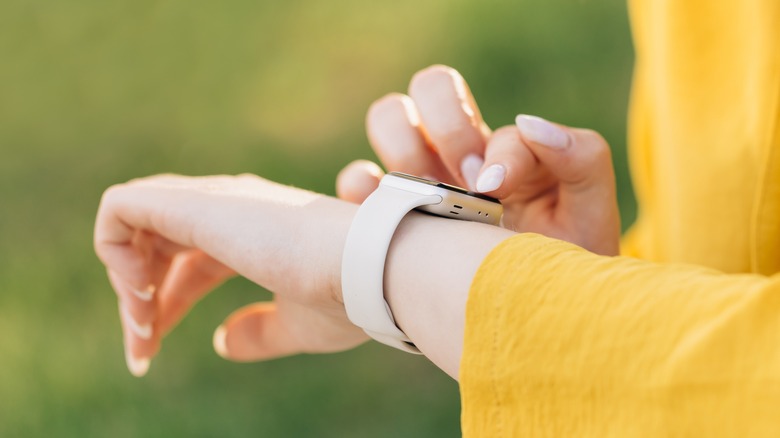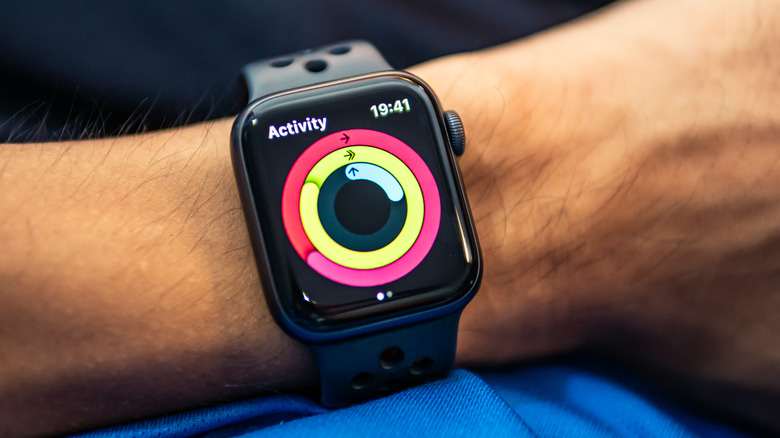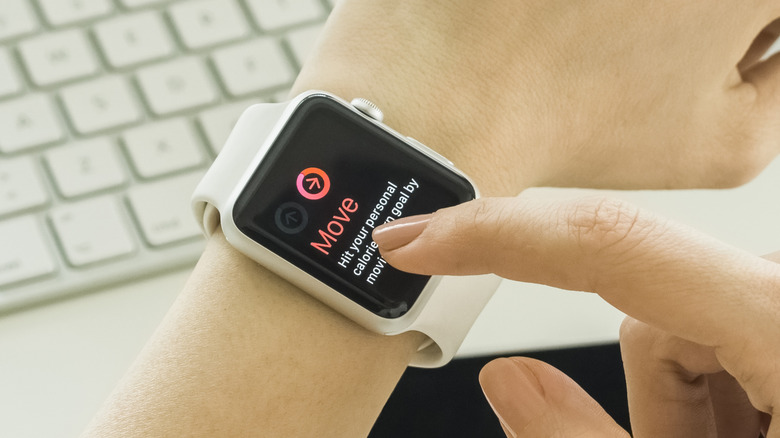3 Ways Apple Watch Can Help Remind You To Get Up And Move Around
This may come as a surprise, but the Apple Watch can act as more than just a timepiece. You can also use Apple's wrist-mounted smart device to keep an eye on a number of health and fitness-related metrics, and monitor (or even encourage) daily activity.
Okay, sure, it's not a major revelation to anyone who's been following (or has owned) the Apple Watch for any length of time. But it can still be a useful tool when it comes to getting us to step away from our desks every so often in the name of our own personal health.
Whether that means simply standing up and stretching for a few minutes or going for a walk during the day depends on what you hope to get out of it, but the options are there. You can set up your Apple Watch without much fuss, or go more in-depth with it to create personalized exercise plans. It all comes down to you.
But first, don't forget to wind your watch!
An improperly calibrated Apple Watch won't necessarily prevent you from being able to use it as movement inspiration, but it is better to have more accurate readings.
- Open Settings (the gear icon), scroll down, and tap the Privacy & Security option.
- Select Location Services and make sure the toggle on the right is turned on (it will appear green). If it's not (the toggle is gray), tap the toggle to turn it on.
- Scroll down to the bottom of the app list and tap on System Services, then make sure the toggle for Motion Calibration & Distance is turned on (green). If not (gray), tap the toggle to turn it on.
- To calibrate your Apple Watch, put the device on your wrist and move to an open outdoor location with a clear GPS signal. If you're using an Apple Watch Series 1 or older you'll also need to bring your connected iPhone with you.
- Open the Workout app and select Outdoor Walk (you can choose Outdoor Run instead, if you'd prefer to run). Tap the three dots (...) icon to set a goal for your excursion if you'd like.
- Start walking (or running, if you chose Outdoor Run) at your typical pace — so try not to rush or go slower than you usually would — for about 20 minutes.
Your Apple Watch will continue to calibrate itself based on your tracked performance, but this initial 20 minutes is needed to set your baseline.
Set fitness goals
You can use the Activity app on your Apple Watch to set specific Move goals to give you a weekly breakdown of how close (or far) you got with them from week to week.
- In watchOS 7 and newer, open the Activity app (the multi-colored ring icon) on your Apple Watch and tap the icon that looks like a bar graph.
- Rotate the Apple Watch's Digital Crown to scroll to the bottom of the menu, then select Change Goals.
- Tap the Plus (+) or Minus (-) buttons to adjust the values of the highlighted goal to your liking. Alternatively, in watchOS 10 you can also rotate the Digital Crown to scroll through your list of specific goals and then tap the Plus and Minus icon (+-) to adjust the values for that particular one.
- When you're finished setting or changing your goals, tap OK.
- In watchOS 6 and older, open the Activity app and then press down firmly on the Watch screen until a new menu appears.
- Tap the Change Move Goal option once it shows up, then adjust your goal as you see fit.
Your Apple Watch will share your numbers for the week with you every Monday, and you're free to re-adjust your goals as much as you want until you find a balance that works best.
Activity reminders
One of the best ways to have your Apple Watch remind you to get up and move around is to quite literally set a reminder.
- Open the Watch app on the iPhone that's been paired with your Apple Watch and select the My Watch tab.
- Tap Activity, then scroll through the list of possible notifications.
- Locate the option for Stand Reminders and turn it on by tapping the toggle next to it (green for on, gray for off).
Stand Reminders will send you a notification once every 50 minutes on the hour (so at 1:50, 2:50, etc) if the Apple Watch doesn't detect any standing activity. If, however, over the course of an hour it detects you standing up and moving ("moving" can include walking or simply moving your arms around) for approximately two or more minutes you won't receive a reminder for that hour. You'll also want to make sure that you get up and move at least a little bit on your own over the course of a couple of consecutive hours, otherwise the Apple Watch may assume you're sleeping and stop issuing reminders.
Dedicated fitness apps
While the Apple Watch's own built-in reminders can help to keep you from becoming too sedentary, there's also a variety of other fitness apps available that offer even more options. This small set of examples have been taken from SlashGear's own top health app selections from 2023, but of course you're free to keep looking if none of them fully suit your needs. Really the only tough part is deciding which apps will work best for you.
If you can stomach its particular brand of crass humor, Carrot Fitness is designed to help you reach your fitness goals no matter how much you may or may not want it to. For a fitness app with less of a sadistic AI overlord approach there's also Apple Fitness+, which supports multiple types of workouts and lets you customize your own fitness plan. Though you will need to pay a $9.99 per month (or $79.99 per year) subscription fee once the free trial ends.
Or for something a little more self-directed, but also step-focused, there's Pedometer++. It's a simple app that works alongside Apple's own Health app to keep track of your daily step counts, distance, and more while also claiming to not cause any significant drain to your device's battery. Beyond that, the app also gives you the option to add its step counter (basically a widget you can see at-a-glance on your watch face) so you can quickly check your progress throughout the day.




